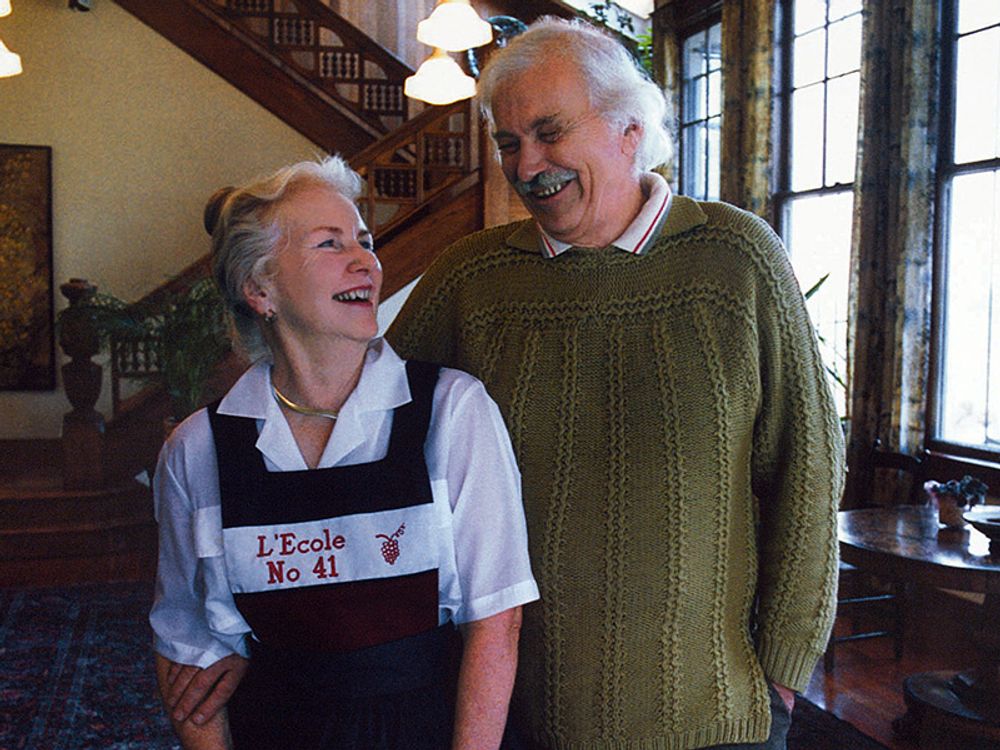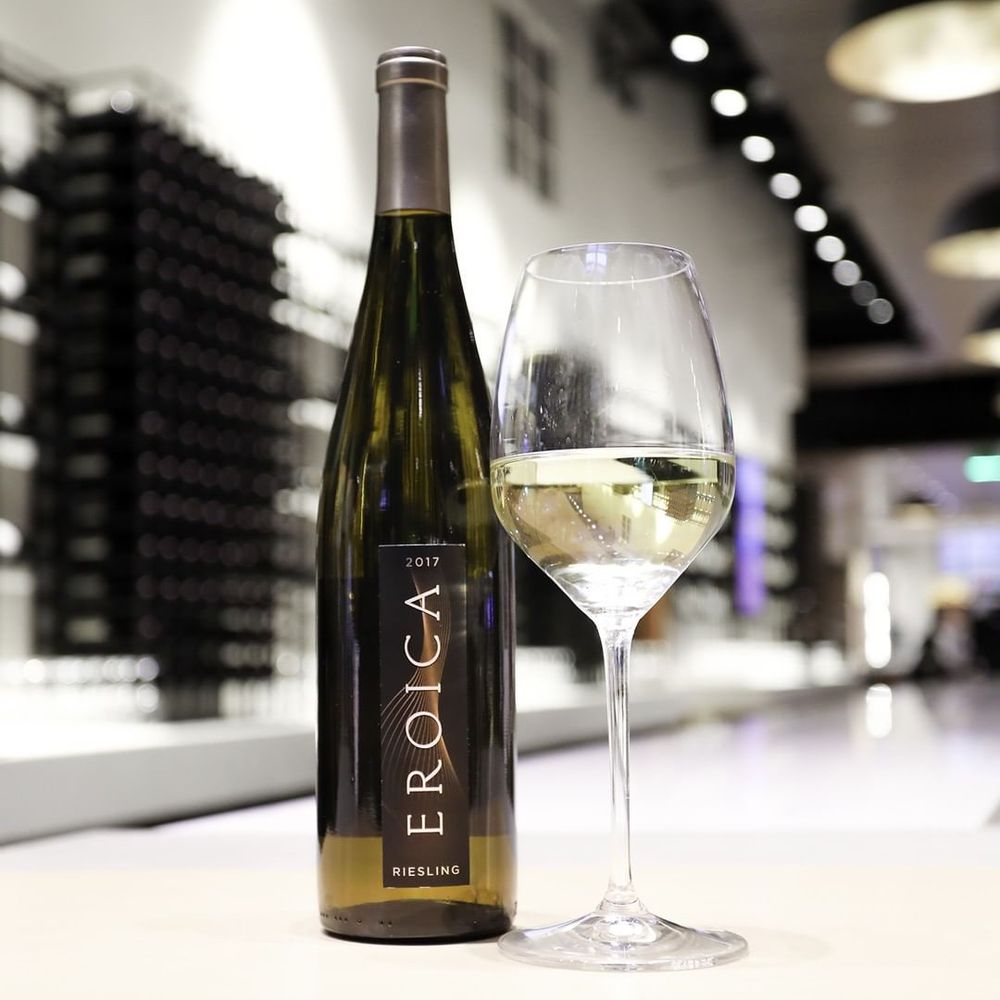“Although Washington State is the largest producer of Riesling in the world after Germany, led by Chateau Ste Michelle, this statistic doesn’t paint an accurate picture,” says Keay.
My first and only wine press trip to Washington State, almost 15 years ago, was memorable – for all the wrong reasons. Run by a PR company whose backers we never properly identified, it eschewed a visit to Château Ste Michelle, the state’s biggest and one of its most respected wineries (“too commercial” and “not the sort of wines you’d like” was the response to my baffled complaints). It also comprised participants quite uninterested in wine (excepting the two who disappeared into a bedroom with a bottle of Walla Walla Syrah) and saw the dramatic early departure of one well known national wine correspondent, in a state of nervous collapse.
However, it did have one highlight – a visit to L’Ecole No 41.
Famously established in the old Frenchtown school house in 1983 in Walla Walla Valley, this Bordeaux-variety focused winery is one of the pioneers here.
Back then there were just 20 wineries in what was an outlier on the winemaking map. By 2000 this had reached 75, whilst today there are almost 1000. Most vineyards are located in eastern Washington to benefit from its more benign climate but most wineries including Chateau St Michelle (established 1976 and the state’s first and biggest winery) are based in the west, to benefit from the volume of people in Seattle and other west coast populations centres. (Château Set Michelle is in Woodinville, just outside Seattle).

When Baker and Jean Ferguson set up L’Ecole No.41 in 1983 it was the 3rd winery in Walla Walla and the 20th in the entire state
Cabernet is King in Washington
So it felt like a blast from the past to see L’Ecole’s owner Martin Clubb as one of the producers at the Zoom tasting organised by the Washington State Wine Commission a few weeks ago, ably compered by wine writer Chris Losh. Looking rather more composed than when he hosted our bedraggled group all those years ago, the three wines Clubb showed – the L’Ecole No 41 Semillon 2018 (Drinks Treasury) the Cabernet Sauvignon 2018 (Simply Wines Direct) and L’Ecole No 41 Perigee 2016 (Drinks Treasury) from the best blocks in Walla Walla’s Seven Hills vineyard – confirmed why his winery has become one of the most respected and award-winning in the state.
The Semillon, made with fruit from the Columbia Valley, is rich and rounded, with acidity provided by the 15% Sauvignon Blanc that makes up the final wine. The two Cabernets were frankly world class, rich, nuanced and complex but with a wonderful freshness to the fruit. Both also extremely age-worthy, even more so is the award winning Ferguson Cabernet Sauvignon (not tasted here), the producer’s flagship.

L’Ecole’s new owner Marty Clubb and winemaker, Marcus Rafanelli, working on the blends for the new vintage
“The location of our vineyards up against the mountains gives a pretty, floral and savoury finish. These wines are what give us world reach, they are who we are,” argues Clubb.
They are certainly part of the reason this whole region – which is twice the size of Beaujolais and lying on the 46thparallel at the same latitude as some of Europe’s best known wine regions – has gained such a reputation for the variety.
“There’s no escaping it: Cabernet is King here, and is one of the main reasons Washington State is one of the most garlanded wine regions in the world right now,” says Steve Warner, President of the Washington State Wine Commission for the past ten years.
He attributes this to geography (the protection offered by the Cascade Mountains ensure the eastern wine growing regions don’t get the drenching so famous in places like Seattle), geology (volcanic soil, amongst others) and climate, with the huge diurnal temperature changes in summertime (from 38°C down to 16°C) coupled with long daylight hours giving the grapes a unique freshness and vibrancy.

17°F at Chateau St. Michelle’s Canoe Ridge Estate Vineyard: it’s key for the vines to go dormant before it gets too cold
The fortunate coming together of the elements was echoed by Sarah Hedges Goedhart, winemaker for the Hedges Family Estate (established in Red Mountain in 1987) and her own label: we tasted three wines from this stable the CMS 2018 (a decent relatively easy drinking, well-priced, trademarked Cabernet-Merlot-Syrah blend) the flagship Hedges Family Estate 2017 (a well-made, low intervention blend of 48% Cabernet Sauvignon, 26% Merlot, 12% Cabernet Franc, 10% Syrah and 4% Merlot) from the Red Mountain AVA, and from the same AVA, the single vineyard Goedhart Family Syrah 2015 (from what she admits was a very hot vintage in the Bel Villa vineyard).
The flagship here was probably unsurprisingly the most impressive of these wines. Goedhart says, “it really says who we are,” and certainly the dark brambly fruit, with blackcurrant and blackberry on the palate, and long finish were very memorable. (All wines available from Roberson). For the price, around £38, this wine more than delivers, packing a punch that evolved nicely for a few days after opening.

Charles Smith: his labels are designed by the ex-head of design for Levi’s premium brands
One step back, two steps forward
So why we aren’t all buying Washington State wines in the UK, in an on-trade – and an off-trade – that loves new wines from new places? Even Columbia Crest, the brand owned by Château St Michelle and sold across the US, is scarce here, although Charles Smith Wines, with their amusing labelling and nomenclature (Kung Fu Riesling, Boom Boom Syrah etc) has established a foothold in both the on-trade and off-trade.
For what they are, Washington State wines are good value and the fact most producers are small scale is another plus, with character and individuality a given.
But although Washington State is the largest producer of Riesling in the world after Germany, led by Chateau Ste Michelle (the Eroica Riesling 2019, made with Ernie Loosen was quite delicious) this statistic doesn’t paint an accurate picture.
In a state where the industry is dominated by red grapes, the fact that well over one quarter of plantings are of Cabernet Sauvignon, with Merlot the second planted variety (Syrah is third) really sets the tone for this region. Whilst some of the wines shown were not quite Parker in style, it did feel at times like I’d stepped back 15 years; many would represent a hard sell in the UK, a market which values more approachable, user friendly wines with a bit less alcohol, tannin and oak.
That said, in the continuing evolving panorama that is Washington State wine, change may be coming. David Rosenthal, white winemaker for Chateau Ste Michelle, stresses that 70 varieties are now grown with many new winemakers in particular planting what would have once seemed positively exotic grape varieties, including Gruner Veltliner, Albarino, Grenache, Cinsault and Barbera. Plantings of Cabernet Franc are on the rise, which is another positive, given the current growing popularity of this variety.
And in last year’s harvest – down 11% on 2019 – Chardonnay emerged as the second variety, after Cabernet Sauvignon, with 28,100 tons harvested against 52,000 tons for Cab Sauv, 16% of the total against 29%. This suggests growers are responding to the pick-up in consumer demand for the grape, now that the ABC crowd have moved on and been replaced by the Sauvignon Blanc/Pinot Grigio refuseniks. Two Chardonnays I tried, the Charles Smith Eve Chardonnay 2019 (£12.30 from VNUM) and the CSM Columbia Valley Chardonnay (£16.95 Enotria) showed very different styles, the former spritzier and with more acidity and green apple, the latter a richer, more rounded wine with buttery mango flavours and moderate acidity, which I really liked. Something for everyone then, even for those who still insist they “don’t like Chardonnay.”

Washington State is the second largest producer of Riesling after Germany
But for the real holdouts, the CMS White – which calls itself Sauvignon but actually comprises 19% Chardonnay and 1% Marsanne – is an unusual blend well worth a look; with the oddly old-fashioned label that seems typical of all Hedges wines, this crisp green apple Columbia Valley wine reflects the growing interest being taken here by winemakers in white blends. (Roberson £20).
Going forward, climate change is set to play a growing role here. According to winemakers the last decade was the warmest in the state’s history and several recent vintages – notably 2015 – saw unprecedented heat. But the industry is expected to see continued growth. According to some reports four new wineries open every month whilst acreage under vine has doubled to 60,000 since 2000 and could reach 200,000 in the next 20 years.
The state is now home to 16 AVAs, of which Yakima, Walla Walla, Red Mountain and the vast Columbia Valley (home to just about every grape variety you can imagine) are probably the best known. Another three are in the pipeline, which means new terroir and new opportunities for winemakers.
So going forward, expect to see Washington State producers diversify their offering – and make more serious efforts to boost their presence in markets such as the UK.










































